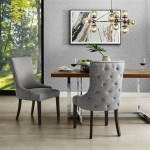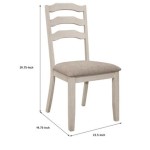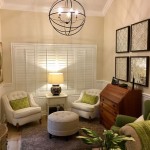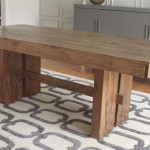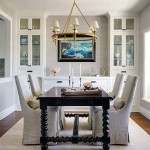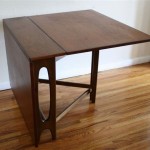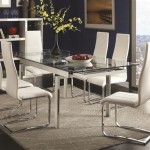Dining Room Tables That Extend To Seat 12: A Comprehensive Guide
The modern dining room is often more than just a place to eat; it is a hub for family gatherings, celebratory feasts, and social events. For those who frequently host large groups, a dining room table that can comfortably seat 12 people is a significant investment. Purchasing a table with extendable capabilities offers the flexibility to accommodate both everyday family meals and larger gatherings without sacrificing valuable space when not needed. This article provides a comprehensive overview of dining room tables that extend to seat 12, exploring different styles, materials, extension mechanisms, and considerations for selecting the right table for your needs.
Styles and Designs of Extendable Dining Tables
Extendable dining tables that can seat 12 are available in a wide range of styles to complement various interior design aesthetics. The style chosen should reflect the overall ambiance of the dining room and the homeowner’s personal preferences. Common styles include:
Traditional: Traditional extendable dining tables often feature ornate details, such as carved legs, intricate inlays, and a rich, warm finish. These tables are typically made from solid wood, like mahogany or cherry, and evoke a sense of timeless elegance. They often include leaves that are stored separately and added to the table when needed.
Modern: Modern extendable dining tables embrace clean lines, minimalist designs, and contemporary materials. They may incorporate metal accents, glass tops, or sleek, lacquered finishes. Extension mechanisms are often hidden or seamlessly integrated into the table's design, maintaining a streamlined appearance. These tables may use butterfly leaves, drop-leaf designs, or sliding mechanisms to expand their seating capacity.
Contemporary: Contemporary styles blend elements of modern and traditional design, resulting in a sophisticated and versatile look. These tables may feature a combination of wood and metal, with a focus on both form and function. They often have unique shapes and unexpected details, making them a focal point in the dining room.
Rustic: Rustic extendable dining tables emphasize natural materials and a raw, unfinished aesthetic. They are often made from reclaimed wood or feature a distressed finish, showcasing the wood's natural grain and imperfections. These tables can add warmth and character to a dining room, creating a cozy and inviting atmosphere.
Farmhouse: Farmhouse style dining tables are characterized by their simple, functional design and durable construction. They often feature a plank-style tabletop, sturdy legs, and a painted or stained finish. Extension mechanisms are typically straightforward and easy to use, allowing the table to quickly adapt to different seating needs.
The choice of style will significantly influence the overall look and feel of the dining room. It's important to consider the existing furniture, décor, and architectural elements of the space when selecting an extendable dining table.
Materials Used in Extendable Dining Tables
The materials used in the construction of an extendable dining table play a significant role in its durability, appearance, and cost. Common materials include:
Solid Wood: Solid wood is a classic choice for dining tables, offering strength, durability, and natural beauty. Different types of wood, such as oak, maple, cherry, walnut, and mahogany, offer varying levels of hardness, grain patterns, and color. Solid wood tables can be more expensive but are generally considered an investment due to their longevity and timeless appeal. They can be refinished multiple times, extending their lifespan.
Wood Veneer: Wood veneer consists of a thin layer of real wood adhered to a core material, such as plywood or MDF (medium-density fiberboard). Veneer offers a more affordable alternative to solid wood while still providing the look and feel of natural wood. High-quality veneer tables can be durable and resistant to warping, but they may not be as easily refinished as solid wood.
MDF (Medium-Density Fiberboard): MDF is an engineered wood product made from wood fibers and resin. It is a stable and uniform material that is less prone to warping or cracking than solid wood. MDF is often used as a core material for veneer tables or as a substrate for painted finishes. It is a more affordable option but may not be as durable as solid wood.
Metal: Metal is often used for the legs, frames, or accents of extendable dining tables. It can add a modern or industrial touch to the design and provides excellent structural support. Common metals include steel, stainless steel, and wrought iron. Metal tables are typically durable and easy to clean.
Glass: Glass tabletops can create a sleek and contemporary look in the dining room. Tempered glass is a strong and safe option that is resistant to shattering. Glass tables can be paired with wood or metal legs to create a visually striking contrast. They require regular cleaning to maintain their pristine appearance.
Stone: Stone tabletops, such as marble, granite, or quartz, offer a luxurious and durable option for dining tables. Stone is heat-resistant and scratch-resistant, making it ideal for use in the dining room. However, stone tables can be heavy and expensive, requiring specialized installation and care.
The choice of materials will depend on the desired aesthetic, budget, and level of durability required. Solid wood and stone are typically the most expensive options, while veneer and MDF offer more affordable alternatives.
Extension Mechanisms and Functionality
The extension mechanism of a dining table is a crucial factor to consider, as it determines the ease of use and the overall functionality of the table. Several types of extension mechanisms are commonly used in tables that extend to seat 12:
Butterfly Leaf: Butterfly leaf extensions are hinged leaves that are stored within the table itself. When the table is extended, the butterfly leaf unfolds and locks into place, creating a larger surface area. This type of extension is convenient and easy to use, as the leaf is always readily available.
Drop-Leaf: Drop-leaf tables feature hinged leaves that can be folded down to reduce the table's size. When extra seating is needed, the leaves can be raised and supported by brackets or legs. Drop-leaf tables are a good option for small spaces, as they can be easily converted from a small table to a larger one.
Draw Leaf: Draw leaf tables have leaves that slide out from underneath the main tabletop. These leaves are typically stored internally and can be pulled out to extend the table. Draw leaf extensions are relatively easy to use and provide a seamless transition between the extended and unextended positions.
Removable Leaf: Removable leaves are separate pieces of wood that are inserted into the center of the table when extra seating is needed. These leaves are typically stored separately and are added to the table by removing the tabletop and inserting the leaf. Removable leaves are a straightforward extension mechanism, but they require storage space for the leaves when not in use.
Self-Storing Leaf: Some extendable dining tables feature self-storing leaves that are integrated into the table's design. These leaves can be folded or slid into a compartment beneath the tabletop, making them easy to access and store. Self-storing leaves are a convenient option for those who frequently extend their dining table.
Gear Mechanism: Gear mechanisms enable smooth and effortless extension and retraction of the table. Often found in modern designs, the table is split in the middle and turns a gear which separates the table. The leaf is then installed from a separate storage space to complete the extension.
When selecting an extendable dining table, consider the ease of use of the extension mechanism, the storage requirements for the leaves, and the overall stability of the table when fully extended. The mechanism should be smooth and reliable, allowing for quick and effortless transitions between different seating capacities.
Size and Space Considerations
Before purchasing an extendable dining table that seats 12, it is crucial to carefully measure the dining room and consider the available space. A table that is too large can overwhelm the room and make it difficult to move around comfortably.
Minimum Space Requirements: As a general guideline, allow at least 36 inches of space between the edge of the table and any walls or furniture. This will provide enough room for diners to comfortably pull out their chairs and move around the table.
Table Dimensions: A table that can comfortably seat 12 people typically requires a minimum length of 96 inches and a width of 48 inches. However, the exact dimensions will vary depending on the shape of the table and the size of the chairs.
Extended vs. Unextended Dimensions: Consider the dimensions of the table both when it is extended and when it is not. Ensure that the table will fit comfortably in the dining room in both configurations. If space is limited, choose a table with a compact unextended size and a substantial extended size.
Chair Size and Style: The size and style of the dining chairs will also impact the overall space requirements. Oversized chairs or chairs with arms will require more space than smaller, armless chairs. Choose chairs that are proportional to the size of the table and that complement the overall design aesthetic.
Room Shape and Layout: The shape and layout of the dining room will also influence the optimal table size and shape. A long, narrow room may be better suited for a rectangular table, while a square room may be better suited for a round or square table. Consider the placement of other furniture, such as sideboards or buffets, when determining the appropriate table size.
Taking accurate measurements and carefully considering the space requirements will help ensure that the extendable dining table fits comfortably and functionally in the dining room.
Care and Maintenance of Extendable Dining Tables
Proper care and maintenance are essential for preserving the beauty and extending the lifespan of an extendable dining table. The specific care requirements will vary depending on the materials used in the table's construction.
Wood Tables: Solid wood and wood veneer tables should be cleaned regularly with a soft, damp cloth. Avoid using harsh chemicals or abrasive cleaners, as these can damage the finish. Protect the table from scratches and stains by using placemats and coasters. Periodically apply furniture polish to maintain the wood's luster and protect it from drying out. For solid wood tables, consider refinishing the surface every few years to remove scratches and restore the original finish.
Glass Tables: Glass tabletops should be cleaned with a glass cleaner and a soft cloth to remove fingerprints and smudges. Avoid using abrasive cleaners, as these can scratch the glass. Protect the edges of the glass from chipping by using edge protectors or bumpers.
Metal Tables: Metal tables can be cleaned with a damp cloth and a mild detergent. Avoid using abrasive cleaners, as these can scratch the metal finish. Protect the metal from rust by wiping it dry after cleaning.
Stone Tables: Stone tabletops should be cleaned with a pH-neutral cleaner specifically designed for stone. Avoid using acidic cleaners, as these can damage the stone. Protect the stone from stains by sealing it regularly. Wipe up spills immediately to prevent staining. Use placemats and coasters to protect the stone from scratches and heat.
Extension Mechanisms: Regularly inspect the extension mechanism of the table to ensure that it is functioning smoothly. Lubricate the moving parts with a silicone-based lubricant if necessary. Clean any debris or dirt from the mechanism to prevent it from sticking.
By following these care and maintenance guidelines, it is possible to keep the extendable dining table looking its best for many years to come. This will ensure it is always ready to accommodate family, friends, and guests at a moment's notice.
Hartford Trestle Extension Table

Homestock 12 Piece 134 Rectangular Extendable Table Dining Set Sideboard Amish Brown Seats

Harper Bright Designs Functional Espresso Wood 42 In Cross Legs Extendable Dining Table Seats 6 With 12 Butterfly Leaf Xw139aap

Extending Dining Tables To Seat 12 Furniture In Fashion

Homestock 11 Piece 134 Rectangular Extendable Dining Set Arm Chairs Seats 12 Walmart Com

Hartford Trestle Extension Table

Seats 12 Dining Tables Pottery Barn

Anderson Teak Sahara Dining Table

Francs Peak Expandable Dining Table Countryside Amish Furniture

500mm 3000mm Rectangle Extendable Dining Table Wood For 12 Person Country Style Walnut Folding


